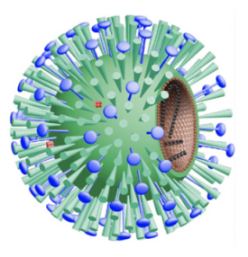Diagnostic Medical Sonography
| The DMS programs for General, Cardiac, and Vascular Sonography are accredited by the (CAAHEP). |
Three Year AST Degree Program
134 credits / 2,952 clock hours
Diagnostic Ultrasound uses high-frequency sound waves to image various organs and structures within the body. It is completely noninvasive, and is used extensively in hospitals and clinics worldwide. The Diagnostic Medical Sonographer utilizes high-tech equipment to assess abdominal organs such as the liver and kidneys; the heart in adults, children, and even the fetus; blood flow within veins and arteries throughout the body, and brain structure in newborn infants.
Sonographers are respected members of the healthcare team. They work closely with physicians such as Radiologists, Cardiologists, Perinatologists, and Surgeons, in the diagnosis of various diseases and conditions.
Students choose from three Sonography specializations:
- General Sonography (OB/GYN, Abdominal)
- Cardiac Sonography (Echocardiography/Heart)
- Vascular Sonography
DMS Professional Plus
83.5 credits / 2,088 clock hours
This two year diploma program is designed for applicants who already have a previous Bachelor's degree in a field other than Medical Imaging. It includes courses anatomy, physiology, medical terminology, patient care, and medical imaging sciences.
DMS Professional
55 credits / 1,536 clock hours
This one year diploma program is designed for applicants who already have a previous 2-year or 4-year degree or diploma in a Medical Imaging specialty such as Radiologic Technology or Nuclear Medicine Technology. It assumes a strong background in anatomy, physiology, medical terminology, patient care, and medical imaging sciences.
Career Opportunities
- Echocardiographer
- Vascular Sonographer
- General/Abdominal Sonographer
- OB/Gyn Sonographer
- Ultrasound Department Manager
- Imaging Services Manager
- Applications Specialist
SAMPLE Of CLINICAL INTERNSHIP AFFILIATES
- Milton S. Hershey Medical Center, Hershey, PA
- York Wellspan Health System, York, PA
- Johns Hopkins University Hospital, Baltimore, MD
- Lehigh Valley General Hospital, Allentown, PA
- UPMC Presbyterian Medical Center, Pittsburgh, PA
- UPMC Shadyside Hospital, Pittsburgh, PA
- Guthrie Clinic and Robert Packer Hospital, Sayre, PA
- Greater Baltimore Medical Center, Towson, MD
- Holy Spirit Hospital, Camp Hill, PA
- Chesapeake General Hospital, Chesapeake, VA
- Quality Vascular Imaging, Venice, FL
Sample of Courses
- Ultrasound Physics and Instrumentation I and II
- Vascular Technology I and II
- Clinical Obstetrics
- Cross-sectional and Three-dimensional Anatomy
- Echocardiography I and II
- Law and Ethics for Imaging Professionals
Labels: TECHNOLOGY









